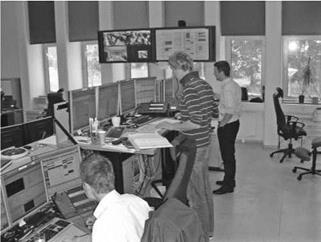Mankind needs to find ways to replicate the processes in which nature by itself handles production and disposal of waste materials into a positive circle and balance. Individuals and local communities will have important roles in creating this form of balance and harmony with nature. They also need to be supported by government laws and regulations and possibly also environmental ‘courts’. In the global arena the implementation of environmental trading as a part of energy trading might have crucial and positive implications.
Trading in this area is, in other words, a very good example of a very complex information-processing environment. It includes most diverse areas of traditional trading from different sectors. It also uses databases from many different sources such as meteorological services, environmental information, and foreign exchange data, as well as physical resources such as transportation (for example, oil tankers, liquefied petroleum gas [LPG] tankers, and so on). It also needs close monitoring of ongoing and evolving situations in energy commodities markets. In addition, this form of trading has to be connected to available information sources of energy production and distribution. All these types of information need to be available online. Critical data and information must be presented in different forms of overview displays that simplify for the traders internalisation of their understanding of the ongoing financial and economic processes. In practice, the traders also need access to a number of smaller displays connected to different kinds of computer systems, including useful computational models. The logic behind all these forms of information presentations must be such that they support and enhance the operators/traders’ understanding of the ongoing process in the market (see Figure 8.12).
Over the past twenty years, these types of models have been studied and researched in various types of industrial process control. In this type of situation we have a good understanding and knowledge about how to build up information displays and related controls to support the operators’ tacit and explicit models of the ongoing processes. As the industrial specialist practicing in the control centre setting, the operator is continuously building up and improving and handling the process. In financial systems we don’t have this form of experience about the critical issues related to the control centre work and its related processes on the financial and trading environments. Today, there is a reliance on the presentation of rather simple key information and data. In future scenarios, it might be expected that overview displays will be designed in relation to the economic theories related to this form of trading and also adopted to the education background of the operators and the learning facilities available. (See Chapter 11, which describes models of learning and creativity in control centre work.) The potential for development in this area is enormous, and the economic gains from this type of development could be very large indeed. An optimal design of the control centre for this type of trading could add skill and ability to the operators. And it will also add to the continuous development of the computer systems and computer software used in this context.
|
FIGURE 8.12 Energy and carbon trading at Vattenfall, Stockholm. |
From ad hoc studies of a few control centres in this area of financial services, it can easily be concluded that there can be improvements in the job organisation, physical working environment, ergonomic layout of the workplaces and design of furniture, visual environment, displays, controls, and so forth. The cost for these additional improvements is marginal compared to the turnover handled by the opera- tors/traders. Today, the operators in this type of workplace are fairly young and most are reasonably physically fit. They are normally not expected to suffer or complain about minor deficiencies in their physical or organisational environment. However, it only needs one of the top traders to get problems in the lower back or (even worse) the neck, which would make him or her more or less incapable of making rational decisions due to severe pain. This type of situation can very easily be prevented. We have decades of experience of ergonomics design that creates a smart-looking and healthy work environment. In a small way this type of environment will also add positively to the daily working performance and work outputs. A good ergonomic environment will be taken for granted and remain unnoticed. Conversely, its absence can be a ‘real pain in the neck’ for the trader.
More critical from the perspective of the traders might be attributes of their job design and organisational issues. These types of jobs often require more than eight hours of daily work time, and lengthy periods of sedentary inactivity can be commonplace. Periods of twenty-four-hour working may not be unusual. Traders can be expected to be rather demanding on job-related rewards and remuneration. In the long-term, highly competitive salaries in financial terms might be seen as inadequate. The characteristics of the job and organisation and the type and form of management are also of great concern. For energy and environmentally orientated traders, possible beneficial factors (inherent job-related motivators) might be the fact that they are potentially making an improvement to the global environmental situation and making a personal contribution towards reducing global warming.




